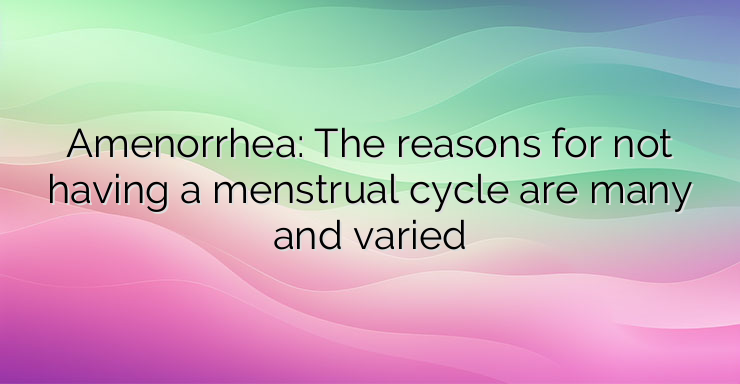Amenorrhea is the absence of a menstrual cycle. Women who have missed at least three menstrual cycles in a row or girls who have not had a period by the age of 15 have amenorrhea. The most common cause of amenorrhea is pregnancy. Other causes may include problems with the reproductive organs or with the glands that help regulate hormone levels. Treating the underlying condition often results in a cure. The main sign of amenorrhea is the absence of a menstrual cycle. Depending on the root cause, you may also observe: Milk separation from the breast; Hair loss; Headache; Vision changes; Facial hair; Pelvic pain; Acne Amenorrhea can occur for various reasons. Some are normally seen during a woman’s life, while others may be a side effect of medication or a sign of a medical problem. Natural Amenorrhea Amenorrhea can be observed for natural reasons such as: Pregnancy; Breastfeeding; Menopause. Contraceptives Some women who take birth control pills may not have periods. Even after stopping oral contraceptives, it may take some time before regular ovulation and periods return. Contraceptives that are injected or implanted, or some types of intrauterine pessaries, can also cause amenorrhea. Medications Some medications can cause the menstrual cycle to stop, including some types of: Antipsychotics; Chemotherapeutic agents for the treatment of malignant diseases; Antidepressants; Medicines for the treatment of high blood pressure; Antihistamines Lifestyle Sometimes lifestyle factors contribute to the problem. Such factors are: Low body weight. Being underweight disrupts many hormonal functions in your body, potentially stopping ovulation. Women who suffer from an eating disorder such as anorexia or bulimia often have periods of amenorrhea due to the abnormal hormonal changes. Excessive physical activity. Women who participate in activities that require rigorous training (such as ballet) usually have periods of amenorrhea. Several factors combine to contribute to the lack of periods in athletes, including low body fat, stress and high energy expenditure. Stress. Mental stress can temporarily alter the functioning of the hypothalamus (an area of the brain that controls the hormones that regulate the menstrual cycle). Ovulation and menstruation may stop as a result. Regular menstrual periods usually resume once the stress subsides. Hormonal Imbalance Many pathological conditions can cause an imbalance in hormonal levels. Polycystic ovary syndrome. The disease results in an increase and maintenance of hormone levels, rather than the fluctuating levels seen during a normal cycle. Diseases of the thyroid gland. An overactive gland (hyperthyroidism) or an underactive gland (hypothyroidism) can cause menstrual changes,including amenorrhea. Pituitary tumors. Benign tumors in the pituitary gland can affect the hormonal regulation of menstruation. Premature menopause. Menopause usually starts around age 50. But in some women, the egg supply in the ovaries decreases before the age of 40 and menstruation stops. Factors that can increase the risk of amenorrhea are three main ones – family history, eating disorders and excessive exercise. Like any other disease, amenorrhea carries with it the risk of complications. The risks of infertility are there. If you don’t ovulate and don’t have a menstrual cycle, you can’t get pregnant. Also, if amenorrhea is caused by low estrogen levels, you are at risk of osteoporosis – weakening of the bones.


Leave a Reply